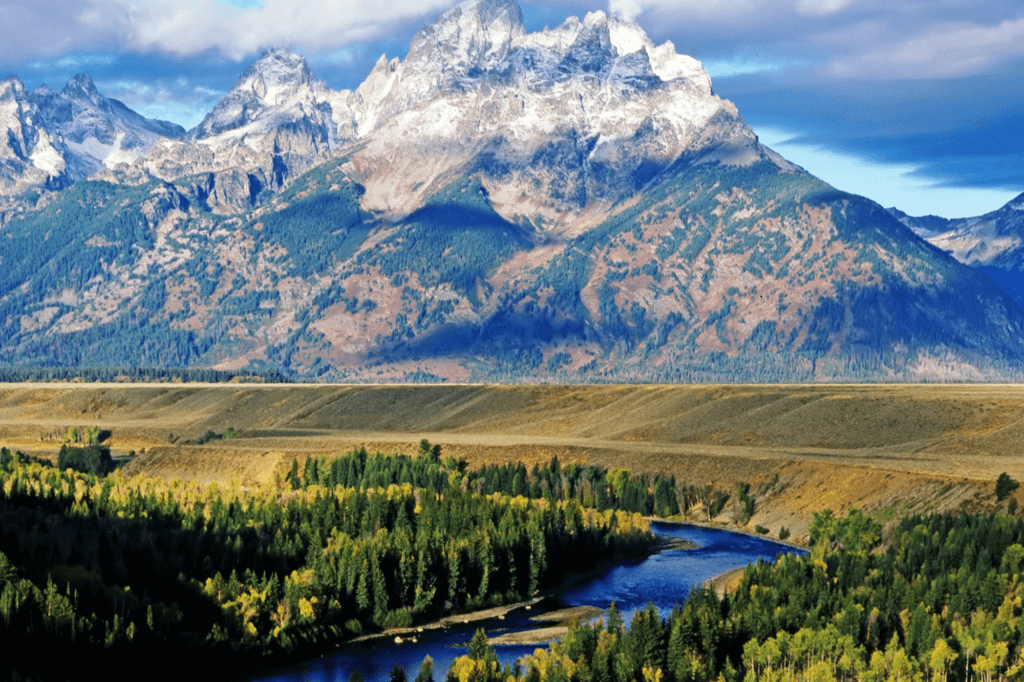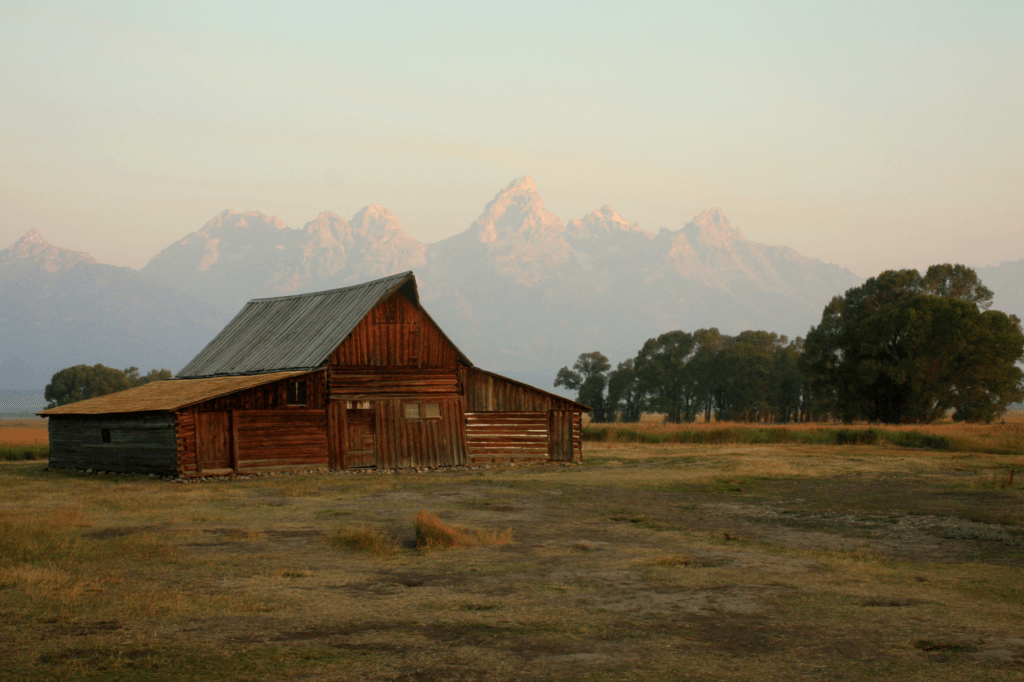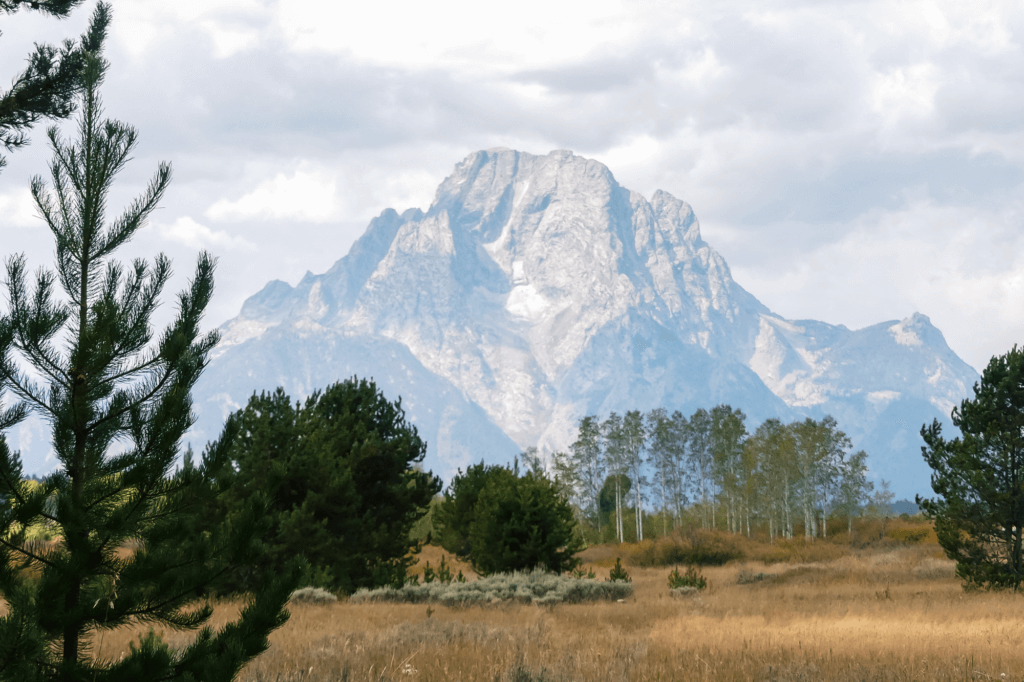

Introduction
Welcome to Grand Teton National Park, a stunning paradise in northwestern Wyoming that promises adventure, beauty, and tranquility. With its towering peaks, sparkling lakes, and diverse wildlife, this park is a dream destination for anyone looking to reconnect with nature. Whether you’re an enthusiastic hiker, a passionate photographer, or just in need of a peaceful retreat, Grand Teton National Park is calling your name! I think I say this about every national park I’ve been to but Grand Teton National Park really is my absolute favorite. The mountain range is so beautiful- I could stare at it all day.
Getting There
Getting to Grand Teton is a breeze. Fly into Jackson Hole Airport, just a hop away from the park. From Jackson, it’s a short, scenic drive north on U.S. Highway 191 straight to the park entrance. If you’re already exploring Yellowstone National Park, lucky you! Grand Teton is just an hour’s drive south, perfect for a spectacular day trip. (Note: Yellowstone NP is actually a great day trip from Grand Teton National Park, too! Check out my guide to visiting Yellowstone National Park in 1 Day HERE).
It’s worth noting that flights to Jackson Hole can be expensive. Sam and I ended up flying to Salt Lake City and making the 4.5 hour drive to Teton Village, Wyoming. It was a pretty drive but next time I think it would be worth it to me to spend a little extra to fly directly into Jackson Hole. I think I may have just been overly tired having to fly from Pittsburgh to Denver and then add a long drive on top of things. If you don’t mind driving and/or have a shorter flight to SLC, I would consider saving some money by driving.

Best Time to Visit
Grand Teton National Park weather varies. While GTNP is a year-round destination, the best time to visit depends on what activities you’re interested in.
- Summer (June to August): This is the most popular time to visit, with pleasant weather, all facilities open, and a full range of activities available, from hiking and boating to ranger-led programs.
- Fall (September to October): Cooler temperatures and fewer crowds make fall an ideal time for hiking and wildlife viewing. The autumn colors are spectacular, with the park’s forests and meadows transforming into a vibrant tapestry of reds, yellows, and oranges.
- Winter (November to March): While some facilities close for the season, winter brings opportunities for cross-country skiing, snowshoeing, and wildlife viewing. The park’s serene, snow-covered landscapes are a haven for those seeking solitude.
- Spring (April to May): As the snow melts, the park begins to awaken with blooming wildflowers and active wildlife. Some trails and roads may still be closed, but this is a great time for birdwatching and photography.
Must-See Attractions
- Teton Range:
- The park’s iconic mountain range is a sight to behold. The jagged peaks, including the Grand Teton, stand majestically against the sky. Take a scenic drive along the Teton Park Road for stunning views and numerous pullouts for photo opportunities.
- Jenny Lake:
- One of the most popular destinations in the park, Jenny Lake offers crystal-clear waters surrounded by towering peaks. Enjoy a boat ride across the lake, or hike the 7.6-mile loop trail for breathtaking views.
- Snake River:
- The winding Snake River offers numerous recreational opportunities, from scenic float trips to challenging whitewater rafting (we did this White Water Rafting Tour). The river is also a prime spot for fishing and wildlife viewing.
- Hidden Falls and Inspiration Point:
- Accessible via a boat ride across Jenny Lake and a short hike, Hidden Falls is a stunning 100-foot waterfall. Continue your hike to Inspiration Point for panoramic views of Jenny Lake and the surrounding mountains.
- Mormon Row Historic District:
- This area features well-preserved homesteads from the late 19th century. The iconic Moulton Barns, set against the backdrop of the Tetons, are a favorite subject for photographers.

Outdoor Activities
- Hiking:
- With over 230 miles of trails, Grand Teton offers hiking opportunities for all skill levels. Popular trails include the Cascade Canyon Trail, the Leigh Lake Trail, and the Teton Crest Trail for more experienced hikers.
- Wildlife Watching:
- The park is home to a diverse array of wildlife, including bison, elk, moose, bears, and eagles. The best times for wildlife viewing are early morning and late afternoon. Remember to maintain a safe distance and follow park guidelines. We took this Grand Teton Wildlife Tour and it was great! We saw a ton of different animals.
- Boating and Fishing:
- Several lakes and rivers within the park provide excellent opportunities for boating and fishing. Jenny Lake, Jackson Lake, and the Snake River are popular spots. Make sure to obtain the necessary permits.
- Climbing and Mountaineering:
- The Teton Range is a renowned destination for climbers. Whether you’re a novice or an experienced climber, there are routes to suit all skill levels. Consider hiring a guide for a safe and enjoyable experience.
Accommodations
Grand Teton National Park offers a variety of lodging options, from campgrounds to historic lodges.
- Lodges:
- Jackson Lake Lodge, Jenny Lake Lodge, and Signal Mountain Lodge offer comfortable accommodations with stunning views and easy access to park activities.
- Campgrounds:
- The park has several campgrounds, including Colter Bay, Gros Ventre, and Lizard Creek. Reservations are recommended, especially during peak season.
- Backcountry Camping:
- For a more adventurous experience, obtain a permit for backcountry camping. This allows you to explore remote areas of the park and experience its pristine wilderness.
For hotels near Grand Teton National Park, check out Teton Village, Wyoming. We stayed in Teton Village, Wyoming which is only a 5 minute drive from Grand Teton National Park. You can read my post on Teton Village, Wyoming HERE.
Tips for a Memorable Visit

- Plan Ahead:
- Due to the park’s popularity, it’s essential to plan your visit in advance, especially if you’re visiting during the summer. Make reservations for lodging and activities early.
- Stay Safe:
- Follow all park guidelines and safety recommendations. Carry bear spray, stay on marked trails, and be aware of changing weather conditions.
- Respect Wildlife:
- Maintain a safe distance from all wildlife, and never feed animals. This helps protect both visitors and the park’s natural inhabitants.
- Leave No Trace:
- Practice Leave No Trace principles to help preserve the park’s beauty for future generations. Pack out all trash, respect wildlife habitats, and minimize your impact on the environment.
Conclusion
Grand Teton National Park is an adventurer’s paradise and a peaceful retreat rolled into one. Its awe-inspiring landscapes, abundant wildlife, and endless activities make it a must-visit for nature lovers. Pack your bags, grab your hiking boots, and get ready to explore one of America’s most beautiful national parks.
Happy travels and enjoy every moment in this breathtaking natural wonder!


